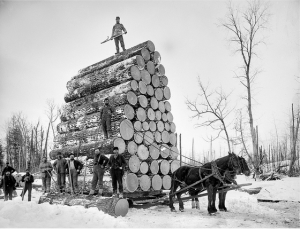5 Questions To Ask Before Constructing A Log Home

The thought of building your beautiful log home is an exciting one—the warmth, the charm and the rustic ambiance of log homes are alluring and welcoming. Your log home will be your oasis—an escape from the rest of the world where you can enjoy family, solitude, a crackling fire or a cozy den nestled in the loft. You want your log home to last for generations and become and remain a source of pride and contentment.
Making sure your vision transforms into a 3-D reality without unexpected surprises can be achieved if you do your homework. Read through log-home construction magazines and go online to get ideas concerning flooring, log placement, proactive pest treatments, finishes, floor plans, amenities etc. If possible, attend a home-show or log-home construction classes. Asking questions and getting clarity from the very beginning to ensure your building experience moves forwards as seamlessly as possible is the first big step.
Here are 5 questions to ask before constructing a log home.
1: What Will The Moisture Content Of The Logs Be Upon Delivery?
Moisture within logs is a big deal and the type of drying method that would be used for your logs isn’t nearly as important as how dry your logs will be when they are delivered to your site. The moisture content should range from 15 to 20% in the center. The moisture within the log fibers will, most certainly, affect the amount of log shrinkage and settlement which is why this question is important and needs to be addressed.
2: How Much Can I Afford?
What you can realistically afford is the pivotal element above all else. You’ll need to be absolutely sure you have figured out how large a mortgage you can comfortably afford in addition to local and state taxes and insurance costs. Also, log homes have unique maintenance costs; and those need to be figured into your budget, as well. Find a mortgage calculator online and you’ll get a realistic figure that will coincide with your financial abilities. All you will do is fill in the entry fields provided and within mere seconds you’ll have a very good idea of what you can expect in terms of mortgage loan which will impact the size and type of log home you build.
Your next step will be to find a mortgage lender who will go through the pre-qualification process with you.
3: How Do I Find The Best Log Home Manufacturer and Builder?
Each log home manufacturer will offer its own version of what it thinks is best in terms of plans, building services and even the type of wood species that are utilized. This all boils down to taking the initiative to do the homework required to narrow down your choices. Call at least three manufacturers and builders in your area and have questions ready to ask. Additionally, review the website for each to gain a good idea of what each offers that most-fits your needs and desires. Any reputable manufacturer and builder will be willing and able to supply you with client references—this will be the “proof in the pudding”!
Also, no matter who builds your home, make sure you have a very clear idea of finished costs and how long construction will take.
4: What Kind Of Wood Should I Use For My Home?
Deciding on which wood species to use is, perhaps, more important than you might realize. Different wood species will vary greatly concerning the following:
1: insulation capabilities--Cedar, for example, has an R-Value per inch of 3.78 while Southern Pine has an R-Value of 2.76. Other species, such as Doug Fir, Spruce-Pine Fir and Redwood, range from 3.00 to 3.58 to 3.75, respectively.
2: the number of predictable checks (cracks)
3: resistance to mold, mildew, rot, fungus, decay and insect infiltration
4: how staining products will react to the wood
You’ll want to make an informed choice concerning your wood selection, but as with anything, one has to choose the product that is realistically affordable.
5: What Type Of Roofing Should I Use?
Your roofing selection is based on three things: 1) What type of look do you prefer? 2) How often would you be willing to replace your roof? and 3) what can you afford?
The two most-used materials are composite shingles and metal. One type of metal choice is Standing Seam which involves 12”-wide strips and utilizes screws in all the metal that are covered. This is very advantageous since it prevents the screws from working themselves loose over time. Another less expensive metal choice is called Delta Rib that comes in 3 feet-wide sections.
Composition shingles are another, much-used choice; and a top-of-the-line option is shingles with a 50-year warranty. Shingles with a 30-year warranty are considerably thinner and possess less resistance to wind. Considering the 50-year variety does last longer than the 30-year variety, it might surprise you to learn that the price difference between the two choices is surprisingly low!
The bottom line-- as one who is planning on building a log home – gather as much information as you can long before you ever build. Ask tons of questions, seek out all the information that is readily available, speak with families who have lived in log homes for a while, attend a log-home building class (they are fun and extremely informative!) and become an empowered consumer! In the end, you’ll be able to enjoy the rustic warmth, beauty and serenity of your log home that will serve you and your family well, for decades to come!
